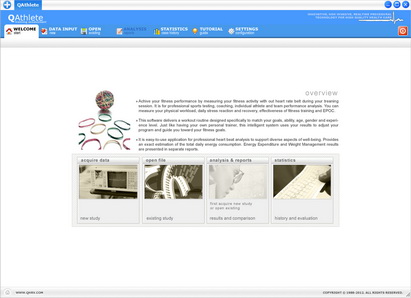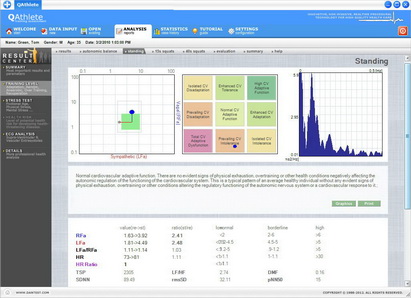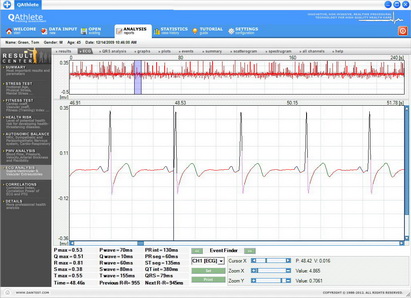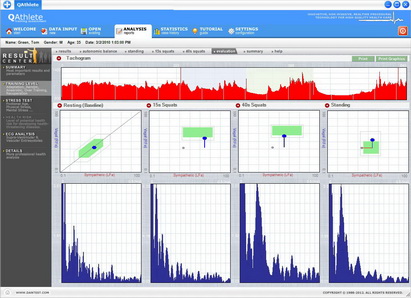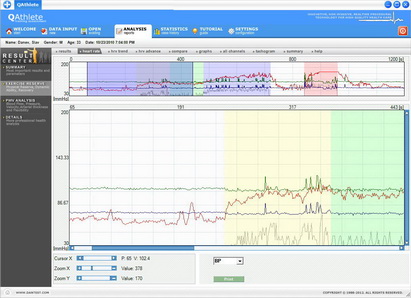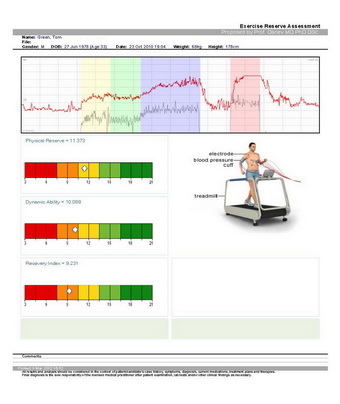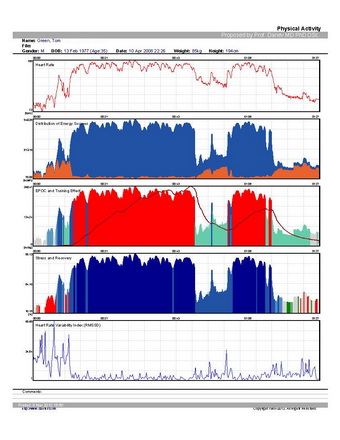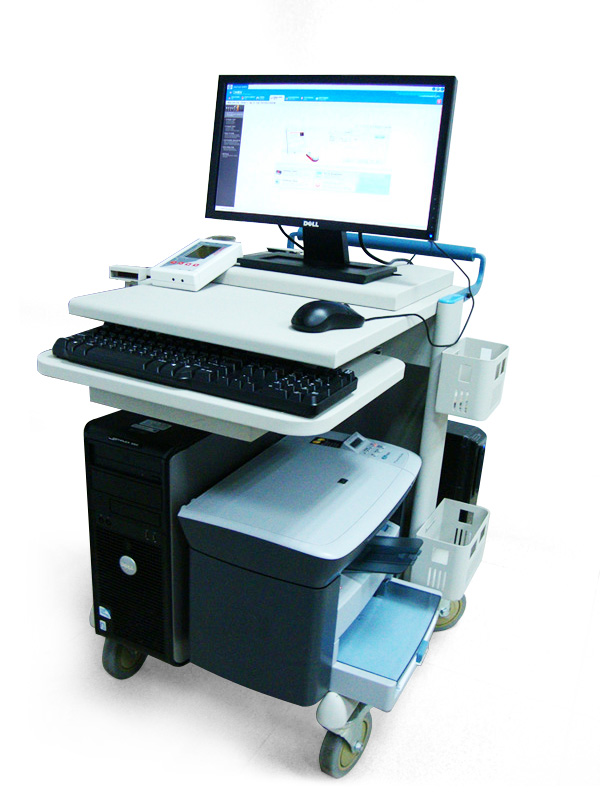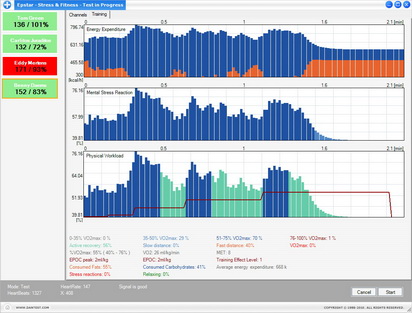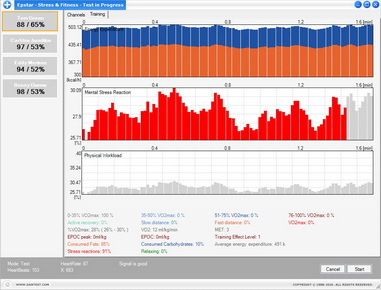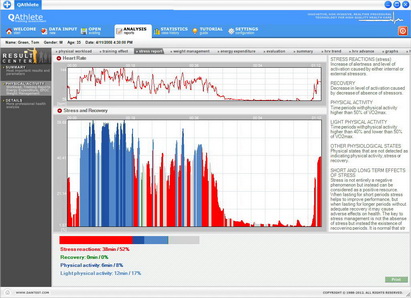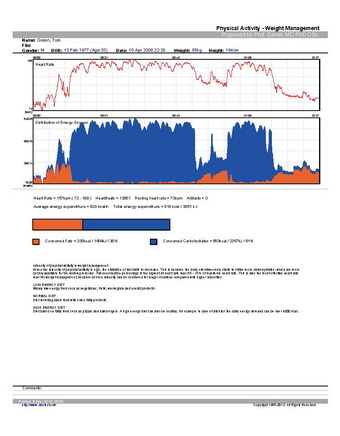Optimize Training and Recovery.
Workouts may not always have the intended effect.
Team Professional Sport Products
Order Request
Introduction
QAthlete's easy-to-use, interactive software was specially designed to support the sport and performance goals of athletes, teams and fitness professionals. This sophisticated, interactive package is the result of over three decades of applied physiological research culminating in the ultimate solution for elite training. QAthlete assists athletes in their pursuit of optimal performance through state-of-the-art heat-rate analysis, workout and nutrition tracking and goal management. This results-based package is a customized solution designed for unparalleled success.
Product Overview
Using our easy-to-use, interactive software this sophisticated product is the result of over three decades of applied physiological research culminating in the ultimate solution for elite training. QAthlete assists coaches and athletes in their pursuit of optimal performance through state-of-the-art heart-rate analysis, workout and nutrition tracking and goal management. This results-based package is a customised solution designed for unparalleled success.
QAthlete provides the information coaches require to address today’s most compelling sport concerns:
* Push performance without provoking injury
* Recover quickly and address stress effectively
* Recognise warning signs of fatigue and illness
* Achieve optimal performance from every player
* Prevent overtraining and push past undertraining
* Real Time Activity Monitoring
Combining easy-to-operate software with non-invasive equipment, QAthlete records and analyses physiological data to produce far-reaching results and incredible insight into your team’s physical fitness and progress. QAthlete Team Professional Sport products provides an unprecedented level of control and predictive potential.
The information generated by QAthlete provides a full spectrum of reports, assessments, calculations and details regarding the physical fitness of its user including the following:
* Calculation of total energy expenditure as well as a detailed description of the training at any time
* Analysis of weight management detailing percentage of fats, carbohydrates, etc that are consumed
* Physical workload during training; analysed second by second.
* Stress and recovery reactions
* Precise heart rate during activity and target heart rate zones
* Training planner including sharing capability
* Overall physical and health level assessment
* Physical capacity and overtraining index
* Training level
As all of our professional team packages are unique, contact us now to discuss your individual requirements and find out how you and your association can benefit from incorporating QAthlete.
Features
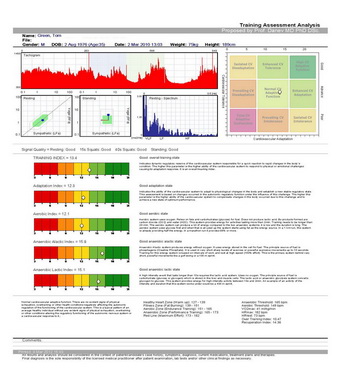 QAthlete provides scientific assessments of important health-related aspects, such as training level, aerobic and anaerobic capabilities, health condition, level of physical and mental stress in the body, the ability to withstand health risk factors, physical shape (fitness), and, ultimately, productivity during performance. Evaluation leads to improvement and limits the risk of overtraining and injury.
QAthlete provides scientific assessments of important health-related aspects, such as training level, aerobic and anaerobic capabilities, health condition, level of physical and mental stress in the body, the ability to withstand health risk factors, physical shape (fitness), and, ultimately, productivity during performance. Evaluation leads to improvement and limits the risk of overtraining and injury.The QAthlete system utilizes a revolutionary approach for assessment of physical fitness. For over 30 years, the team behind QAthlete has been researching physiological effects of exercise, stress and recovery. Combining sophisticated software with state-of-the-art heart equipment, QAthlete transports the laboratory to homes, gyms, clubs and fitness centers worldwide.
The QAthlete system is easily installed on a desktop or a notebook computer and uses a heart rate belt or a ECG device to collect data for analysis. The system recognizes various states of physical fitness and generates quick reports based upon legions of data. Fitness evaluation by QAthlete includes the following:
* Overtraining index
* Recuperation index
* Overall training index/level
* Anaerobic alactic index
* Anaerobic lactic index
* Aerobic index
* Training adaptation index
* Resource depletion
* Stress reactions
This information provides an unprecedented level of control and predictive potential for fitness professionals, coaches, athletes and individuals.
read more
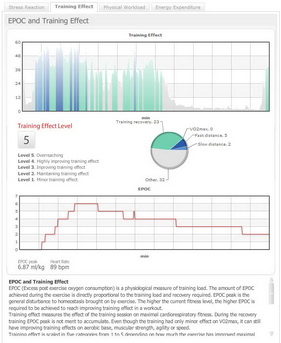 QAthlete provides important insight into your body’s response to exercise by allowing you to measure physical workload, daily stress reaction and recovery, effectiveness of fitness training and EPOC. Discover the actual effects of your workout with QAthlete technology in order to train safely, more efficiently and more effectively.
QAthlete provides important insight into your body’s response to exercise by allowing you to measure physical workload, daily stress reaction and recovery, effectiveness of fitness training and EPOC. Discover the actual effects of your workout with QAthlete technology in order to train safely, more efficiently and more effectively.Training Effect
Training effect indicates the performance and exertion level of an exercise session. Knowing training effect can lead to optimized performance. With QAthlete, view the positive training effect of successive workouts on physical fitness and physical condition during the measurement period. Discover the actual effects of your workout in order to train more safely and more effectively.
EPOC (Excess Post-Exercise Oxygen Consumption)
EPOC, or the amount of oxygen consumed after exercise during recovery, is the best parameter for measuring training effect. Harnessing this information is vital for targeting the optimal workout zone in order to improve fitness without overtraining. Using science and mathematics to train your body, QAthlete puts the laboratory at your fingertips to empower users with this valuable assessment.
Physical Workload and Recovery
Efficient and effective workouts are essential to improving physical fitness. QAthlete provides important insight into your body’s response to exercise by allowing you to observe and monitor physical output, workload and recovery. Reports based on scientific measurements allow you to prepare programs based on your body’s specific abilities, enabling you to progress and push the limits of performance without overtraining or risk of injury.
Weight Management & Energy Expenditure, Calories Burned
Effective weight management is exclusively based on the balance of energy intake and energy consumption. While the science is simple many people have a difficult time with maintaining a healthy weight. QAthlete facilitates goal-orientated weight management by providing an exact estimation of the total daily energy consumption as well as the effects of everyday activities on energy consumption.
Daily Momentary Mental Stress and Relaxation
Stress is present in our lives in two major ways: momentary stress and cumulative stress. Momentary stress occurs during our working lives as well as during sleep and can accumulate over time. Continuous increases in momentary stress leads to long-term, cumulative stress which can result in physical and mental breakdown. It is, therefore, important to measure momentary stress, recover quickly from it and understand its effect on our bodies. QAthlete is a proven method of measuring the physiological reactions of stress and recovery. QAthlete is also designed to help and analyze your sleep and improve it.
read more
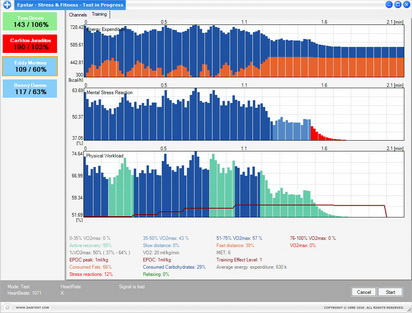 Real Time Physical activity Monitoring is supported with Team Pod Device. Coaches and trainers are able to track and monitor performance of one individual or an entire team of athletes simultaneously. Comprehensive data is generated by QAthlete and available for analyses immediately as well as historically and cumulatively.
Real Time Physical activity Monitoring is supported with Team Pod Device. Coaches and trainers are able to track and monitor performance of one individual or an entire team of athletes simultaneously. Comprehensive data is generated by QAthlete and available for analyses immediately as well as historically and cumulatively.Paired with Team Pod, QAthlete uses cutting edge technology to allow real time measurements of one or multiple players simultaneously. Performance can be viewed over a single workout or a designated time period to allow for comparisons, contrasts and tracking. Coaches and trainers get a detailed analysis of different body parameters including:
* Heart rate
* Energy consumption
* Oxygen consumption
* Workload
* Momentary mental stress reaction
* HRV parameters
* Training Effect
* EPOC
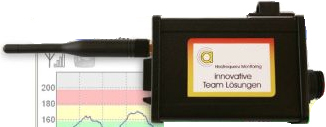 The benefits of real time activity monitoring to both coaches and athletes include the following:
The benefits of real time activity monitoring to both coaches and athletes include the following:* Customized in real time training plans based upon individual performance
* Reduced risk of injury; monitor physical state to prevent overtraining
* Enhanced overall team competency
* Immediate feedback for real time insight and guidance
* Optimized training; monitor training effect and push athletes accordingly
* Motivate athletes by tracking progress to personal goals in real time
Features
* Physical Workload and Recovery
* Current Training Effect & EPOC (excess post-exercise oxygen consumption)
* Energy Expenditure
* Momentary Mental Stress and Relaxation
* Monitor one or more athletes at the same time
read more
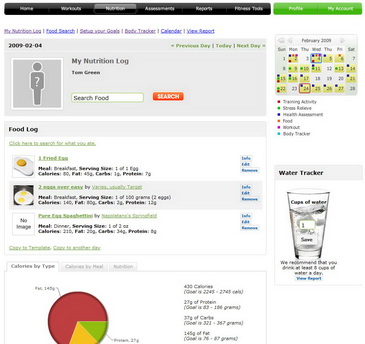 QAthlete simplifies weight management and regular exercise by providing multiple tools for tracking, monitoring, and managing workouts and diet. QAthlete’s unique compilations of daily energy consumption and expenditure keep both athletes and everyday individuals on track and accountable to personal goals and peak performance.
QAthlete simplifies weight management and regular exercise by providing multiple tools for tracking, monitoring, and managing workouts and diet. QAthlete’s unique compilations of daily energy consumption and expenditure keep both athletes and everyday individuals on track and accountable to personal goals and peak performance.Workout Trainer
Achieve maximum performance and ensure commitment to goals using QAthlete’s mobile trainer. Automatically receive workouts tailored to your precise physical state, schedule training sessions, track your workouts, view progress and stay on track. Whether you’re training for a marathon or strolling around the block, QAthlete keeps you in control and motivated to stay moving.
Diet Organizer
Employ technology to help manage your food intake and take control of your diet. Using this comprehensive, easy-to-use online software you can accurately track calories consumed, detailed nutritional information and energy requirements. QAthlete will even customize a diet plan based on your needs while providing numerous summaries and reports based on your personal data.
Tracking Nutrition
Quality of diet and nutrition are central to our overall health but can be easily overlooked. QAthlete’s nutrition log ensures nutritional requirements are properly met by providing detailed nutritional information and daily summaries based on individual consumption. The comprehensive software offers a full nutritional breakdown of over 70,000 foods making diet tracking simple and quick.
Exercise Log
Utilize technology to exercise in a regimented, controlled manner. QAthlete allows you to easily track your strength, sports and cardiovascular workouts then analyze your results to develop custom solutions for goal achievement. Track every mile, every calorie and every hour to determine fitness, intensity, improvement and targets then create personalized programs based on your results.
Body Measurement
One of the most effective methods of tracking fitness and performance levels is measuring the body. Important indicators of strength, health and overall well-being, measurements such as body weight, body fat percentage and waist size are compiled and analyzed in QAthlete’s convenient online application. Easily track progress and form goals.
Goals
Individuals and athletes, alike, respond favorably to goal-setting, however, staying on track can be the biggest challenge to achieving fitness and performance goals. QAthlete assists in setting realistic goals, creating plans for reaching those goals in a timely manner and utilizes powerful tools and reporting to ensure daily progress adds up to ultimate success.
read more
 Stress has two major aspects: momentary stress and accumulative stress. Continuous increase of momentary stress leads to increase in long-term accumulative stress and health level.
Stress has two major aspects: momentary stress and accumulative stress. Continuous increase of momentary stress leads to increase in long-term accumulative stress and health level.Stress could be either physical, mental or both.
Physical stress is caused by long-term exposure to negative factors, such as: irregular lifestyle; physical overload; environmental toxicity; cigarettes; alcohol; drugs; improper diets, etc.
Mental stress can be caused by factors like: insecurity; negative emotions; mental overload; confusion; rejection on a social level; family problems; boredom; low self-esteem; etc.
This system is based on over three decades of profound scientific and medical researches of highly renowned medical professors and different scientific institutes.
Stress means different things to different people. In common language, people recognise a state of having too much expected of them, of being under pressure or strain, of being barely able to cope with some external demand which is both excessive and prolonged. It has a number of synonyms, but they all carry the connotation of unreasonable demands being placed on the individual in an emotional, mental or psychological sense.
A similar concept underlies the term stress in the physical sciences, a deforming force exerted on an object or structure that, if not resisted, would damage or destroy the object. The analogy is graphic and obvious. Scientists in the biological and health sciences also use stress in similar manner with subtle differences. They refer to environmental demands that affect an organism which, if not resisted, would damage or destroy it. It can also be applied to whole environmental systems. The common theme is an external factor that, if not resisted, would damage or destroy the system.
read more
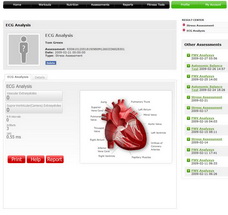 QAthlete’s Exercise ECG is an all-inclusive, PC-based electrocardiogram testing system equipped with state-of-the-art technology for performing stress tests of the utmost accuracy. This low-cost, easy-to-use system enables users to simultaneously monitor 12 leads onscreen using programmable reports and protocols. Other highlights and benefits of QAthlete’s Exercise ECG include the following:
QAthlete’s Exercise ECG is an all-inclusive, PC-based electrocardiogram testing system equipped with state-of-the-art technology for performing stress tests of the utmost accuracy. This low-cost, easy-to-use system enables users to simultaneously monitor 12 leads onscreen using programmable reports and protocols. Other highlights and benefits of QAthlete’s Exercise ECG include the following:• Utilizes wireless ECG sensors
• Automatically generates and prints reports
• Produces bit-to-bit blood pressure measurements
• Customizable stress protocols based on personal preference
• Produces all standard stress protocols
• Generates ST measurements for modification before, during or following completion of the test
A stress test, otherwise known as an exercise electrocardiogram, is a screening tool used to evaluate the effect of exercise on your heart and lungs. Because some heart issues only become apparent during exercise, the test utilizes a treadmill or stationary bicycle to produce results that can be tracked and measured. This noninvasive, diagnostic test measures your heart rate, blood pressure and electrocardiogram (or heart’s electrical activity) before, during and after exercise. The level of exertion is increased gradually during the test to ascertain whether or not the heart and lungs are receiving enough oxygen and performing properly.
Read More
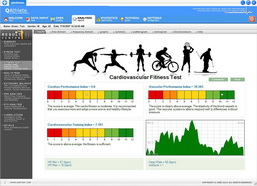 It is widely recognized that Orthostatic testing is one of the most effective methods of measuring subtle changes in cardiovascular function, particularly the system's regulatory mechanisms. When performing the Orthostatic test, the patient sits down for several minutes resting peacefully and then stands up. When the body position shifts from supine or seated to standing, specific changes in heart rate and blood pressure occur as a compensatory reaction of the body. Testing helps to assess the ability of both sympathetic and parasympathetic nervous systems to adequately respond to regulatory challenge caused by gravitational shift in the body's blood mass. The test result (i.e. the orthostatic heart rate) is the difference between the heart rates at supine rest and at standing position.
It is widely recognized that Orthostatic testing is one of the most effective methods of measuring subtle changes in cardiovascular function, particularly the system's regulatory mechanisms. When performing the Orthostatic test, the patient sits down for several minutes resting peacefully and then stands up. When the body position shifts from supine or seated to standing, specific changes in heart rate and blood pressure occur as a compensatory reaction of the body. Testing helps to assess the ability of both sympathetic and parasympathetic nervous systems to adequately respond to regulatory challenge caused by gravitational shift in the body's blood mass. The test result (i.e. the orthostatic heart rate) is the difference between the heart rates at supine rest and at standing position.For a healthy individual, standing up as well as maintaining the standing posture for several minutes causes no significant physical exertion. However, if there is subtle cardiovascular deficiency or the functional capacity of the body's regulatory mechanisms is inadequate then this maneuver becomes a significant stressor to the body.
QAthlete Orthostatic testing is the quantitative and qualitative assessment of the fitness and health levels based on HRV analysis. The test is quick and effective and begins with the attachment of simple, noninvasive electrodes, attached as instructed. The candidate is instructed to stand for two minutes followed by sitting for 30 seconds followed by standing for 30 seconds. The full process is repeated alternately for three minutes. The data collected from mean cardio tachogram and spectrum is analyzed to produce eventual results in both quantitative and qualitative format.
Read More
 Heart Rate Variability (HRV) is a physiological function whereby the time interval between heart beats varies. These variations in heart rate reflect the quality of cardiovascular autonomic function. Autonomic function or function of the autonomic/visceral nervous system regulates involuntary action (eg. respiration, digestion) of the intestines, heart, smooth muscle, and glands. This function is divided into two physiologically and anatomically distinct, mutually antagonistic subsystems: the sympathetic nervous system and the parasympathetic nervous system.
Heart Rate Variability (HRV) is a physiological function whereby the time interval between heart beats varies. These variations in heart rate reflect the quality of cardiovascular autonomic function. Autonomic function or function of the autonomic/visceral nervous system regulates involuntary action (eg. respiration, digestion) of the intestines, heart, smooth muscle, and glands. This function is divided into two physiologically and anatomically distinct, mutually antagonistic subsystems: the sympathetic nervous system and the parasympathetic nervous system.QAthlete systems provide HRV testing which enable physicians to monitor the activity of both the sympathetic and parasympathetic branches of the autonomic nervous system (ANS) in order to accurately assess the state of a patient's autonomic function.
QAthlete provides a two-pronged approach to patient evaluation. Firstly, QAthlete is able to detect specific types of autonomic dysfunction which can consequently be linked to a multitude of clinical diagnoses. Secondly, QAthlete can be utilized for thorough, comprehensive assessments and physiological monitoring which provide physicians with a detailed and thorough patient appraisal which can often be overlooked in standard evaluations.
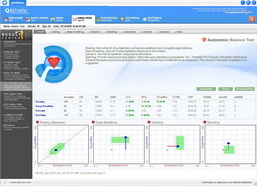 The wide range of clinical applications for QAthlete makes it principally different from all other classes of diagnostic devices. QAthlete allows the physician to thoroughly investigate modalities:
The wide range of clinical applications for QAthlete makes it principally different from all other classes of diagnostic devices. QAthlete allows the physician to thoroughly investigate modalities:* Assessment of resting autonomic balance
* Assessment of reaction of the ANS on orthostatic intervention
* Assessment of autonomic reaction during Valsalva maneuver and deep breathing
* Sympathetic and Parasympathetic autonomic balance correction
Read More
 Pulse wave is a physiological phenomenon, observable and measurable in the arterial system during blood circulation. During one heart systole a certain blood volume is expelled. This propagates through the arteries due to the reciprocal transformation between kinetic energy of a segment of the expelled blood volume and the potential energy of a stretched segment of the resilient vascular wall. We can observe the changes in pressure, blood flow, velocity and profile throughout the whole pulse wave. It can be used for classification of the artery elasticity.
Pulse wave is a physiological phenomenon, observable and measurable in the arterial system during blood circulation. During one heart systole a certain blood volume is expelled. This propagates through the arteries due to the reciprocal transformation between kinetic energy of a segment of the expelled blood volume and the potential energy of a stretched segment of the resilient vascular wall. We can observe the changes in pressure, blood flow, velocity and profile throughout the whole pulse wave. It can be used for classification of the artery elasticity.The condition of the small and large arteries is key to prevention and diagnosis of cardio-vascular related illness. In particular, the stiffness and augmentation of the major arteries is a strong indication of potential health problems including heart attacks, heart failure, sclerosis, and renal complications. PWV Analysis and arterial stiffness indexes (EEI, DDI and DEI) can suggest to healthcare professional to begin appropriate treatment long before the symptoms or clinical signs appear.
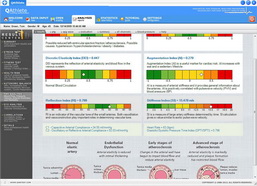 Age and systolic pressure strongly correlate with PWV. In fact, the most important factor contributing to increase in PWV is age because of increased arterial stiffness caused by medial calcification and loss of elasticity. The measurement of pulse wave velocity is useful in the study of the effects of aging, vascular diseases, vaso-dilating and vaso-constricting agents on arteries.
Age and systolic pressure strongly correlate with PWV. In fact, the most important factor contributing to increase in PWV is age because of increased arterial stiffness caused by medial calcification and loss of elasticity. The measurement of pulse wave velocity is useful in the study of the effects of aging, vascular diseases, vaso-dilating and vaso-constricting agents on arteries.QAthlete Pulse Wave Velocity measurement is a convenient method of quantifying arterial stiffness and augmentation. PWV provides invaluable insight into cardiovascular health, management of disease progression and monitoring the effects of medication, treatments, lifestyle and dietary habits.
Read More
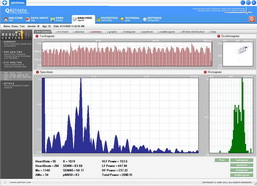 Heart rate variability (HRV) is a measure of variations in the heart rate. It is usually calculated by analyzing the time series of beat-to-beat intervals from ECG or arterial pressure tracings.
Heart rate variability (HRV) is a measure of variations in the heart rate. It is usually calculated by analyzing the time series of beat-to-beat intervals from ECG or arterial pressure tracings.Various measures of heart rate variability have been proposed, which can roughly be subdivided into time domain, frequency domain and non-linear measures. HRV is regarded as an indicator of the activity of autonomic regulation of circulatory function. It also regarded as the definitive method of analyzing the activity of the autonomic nervous system. Alteration (mostly reduction) of HRV has been reported to be associated with various pathologic conditions like hypertension, hemorrhagic shock, and septic shock. It has found its role as a predictor of mortality after an acute myocardial infarction.
Time Domain
A simple example of a time domain measure is the calculation of the standard deviation of beat-to-beat intervals. Other time domain measures include root mean square of the differences between heart beats (rMSSD), NN50 or the number of normal to normal complexes that fall within 50 milliseconds, and pNN50 or the percentage of total number beats that fall with 50 milliseconds. SDNN has been strongly corelated to overall variability, while rMSSD relates to the parasympathetic nervous system activity on heart rate.
Frequency Domain
A common frequency domain method is the application of the discrete Fourier transform also known as the Fast Fourier transform, to the beat-to-beat interval time series. That expresses the amount of variation for different frequencies. Several frequency bands of interest have been defined in humans.
Read More
Recommended For:
* Professional sports club (football, basketball, hockey, etc)
* Elite level athletes
* Coaches
Hardware Options
QAthlete uses specialized hardware devices for heart rate monitoring. You have a choice among several different types of hardware including:
* HW6, HW6E, MG BlueTooth ECG
* HW3 Pod + Belt (Physical activity monitoring)
* Team Pod Device (Real time training monitoring)
Order Request
